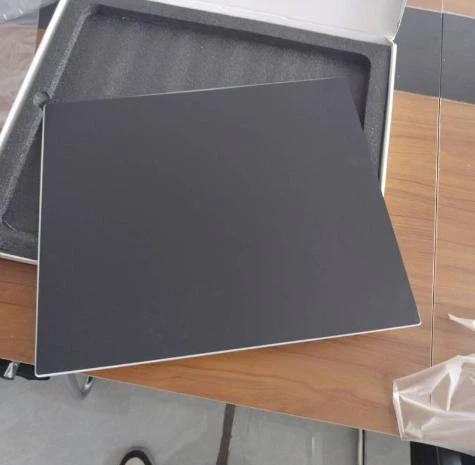Understanding Float Glass A Comprehensive Overview
Float glass, a term widely recognized in the glass manufacturing industry, refers to a type of glass that is characterized by its clarity and smooth finish. The production process involves floating molten glass over molten tin, which creates a perfectly flat and smooth surface. This article explores the process of making float glass, its applications, and its significance in modern architecture and design.
Understanding Float Glass A Comprehensive Overview
One of the most significant advantages of float glass is its optical clarity. The manufacturing process ensures that the glass has minimal impurities and defects, making it ideal for applications where visibility is crucial. As a result, float glass is commonly used in windows, facades, and mirrors. Its transparency and aesthetic appeal make it a preferred choice in both residential and commercial buildings.
float glass examples
In addition to its clarity, float glass can be treated further to enhance its performance characteristics. For example, it can be tempered to increase strength and resistance to thermal stress. Laminated float glass, which consists of multiple layers bonded together with interlayers, offers additional safety, sound insulation, and UV protection. Such treatments enable the use of float glass in a wide variety of settings, from skyscrapers to automobiles.
The versatility of float glass extends beyond its structural applications. It serves as a canvas for creative architectural designs, allowing for innovations in light and space utilization. Architects often capitalize on the material's ability to reflect light and enhance surrounding environments. Moreover, the glass can be colored or coated to achieve different aesthetic outcomes, catering to the diverse tastes and preferences of consumers.
Despite its many benefits, the production of float glass has environmental implications. The manufacturing process consumes a significant amount of energy and can emit greenhouse gases. Therefore, ongoing research is focused on improving energy efficiency and developing sustainable practices in glass manufacturing. By incorporating recycled glass into the production process and utilizing renewable energy sources, the industry aims to reduce its environmental footprint.
In conclusion, float glass plays a pivotal role in modern architecture and design, offering clarity, strength, and aesthetic versatility. Its unique manufacturing process not only ensures a high-quality product but also opens up a realm of possibilities for innovative applications. As the demand for sustainable building materials grows, the float glass industry is poised to evolve, embracing new technologies and practices that prioritize both performance and environmental stewardship.
 Afrikaans
Afrikaans  Albanian
Albanian  Amharic
Amharic  Arabic
Arabic  Armenian
Armenian  Azerbaijani
Azerbaijani  Basque
Basque  Belarusian
Belarusian  Bengali
Bengali  Bosnian
Bosnian  Bulgarian
Bulgarian  Catalan
Catalan  Cebuano
Cebuano  Corsican
Corsican  Croatian
Croatian  Czech
Czech  Danish
Danish  Dutch
Dutch  English
English  Esperanto
Esperanto  Estonian
Estonian  Finnish
Finnish  French
French  Frisian
Frisian  Galician
Galician  Georgian
Georgian  German
German  Greek
Greek  Gujarati
Gujarati  Haitian Creole
Haitian Creole  hausa
hausa  hawaiian
hawaiian  Hebrew
Hebrew  Hindi
Hindi  Miao
Miao  Hungarian
Hungarian  Icelandic
Icelandic  igbo
igbo  Indonesian
Indonesian  irish
irish  Italian
Italian  Japanese
Japanese  Javanese
Javanese  Kannada
Kannada  kazakh
kazakh  Khmer
Khmer  Rwandese
Rwandese  Korean
Korean  Kurdish
Kurdish  Kyrgyz
Kyrgyz  Lao
Lao  Latin
Latin  Latvian
Latvian  Lithuanian
Lithuanian  Luxembourgish
Luxembourgish  Macedonian
Macedonian  Malgashi
Malgashi  Malay
Malay  Malayalam
Malayalam  Maltese
Maltese  Maori
Maori  Marathi
Marathi  Mongolian
Mongolian  Myanmar
Myanmar  Nepali
Nepali  Norwegian
Norwegian  Norwegian
Norwegian  Occitan
Occitan  Pashto
Pashto  Persian
Persian  Polish
Polish  Portuguese
Portuguese  Punjabi
Punjabi  Romanian
Romanian  Russian
Russian  Samoan
Samoan  Scottish Gaelic
Scottish Gaelic  Serbian
Serbian  Sesotho
Sesotho  Shona
Shona  Sindhi
Sindhi  Sinhala
Sinhala  Slovak
Slovak  Slovenian
Slovenian  Somali
Somali  Spanish
Spanish  Sundanese
Sundanese  Swahili
Swahili  Swedish
Swedish  Tagalog
Tagalog  Tajik
Tajik  Tamil
Tamil  Tatar
Tatar  Telugu
Telugu  Thai
Thai  Turkish
Turkish  Turkmen
Turkmen  Ukrainian
Ukrainian  Urdu
Urdu  Uighur
Uighur  Uzbek
Uzbek  Vietnamese
Vietnamese  Welsh
Welsh  Bantu
Bantu  Yiddish
Yiddish  Yoruba
Yoruba  Zulu
Zulu 

